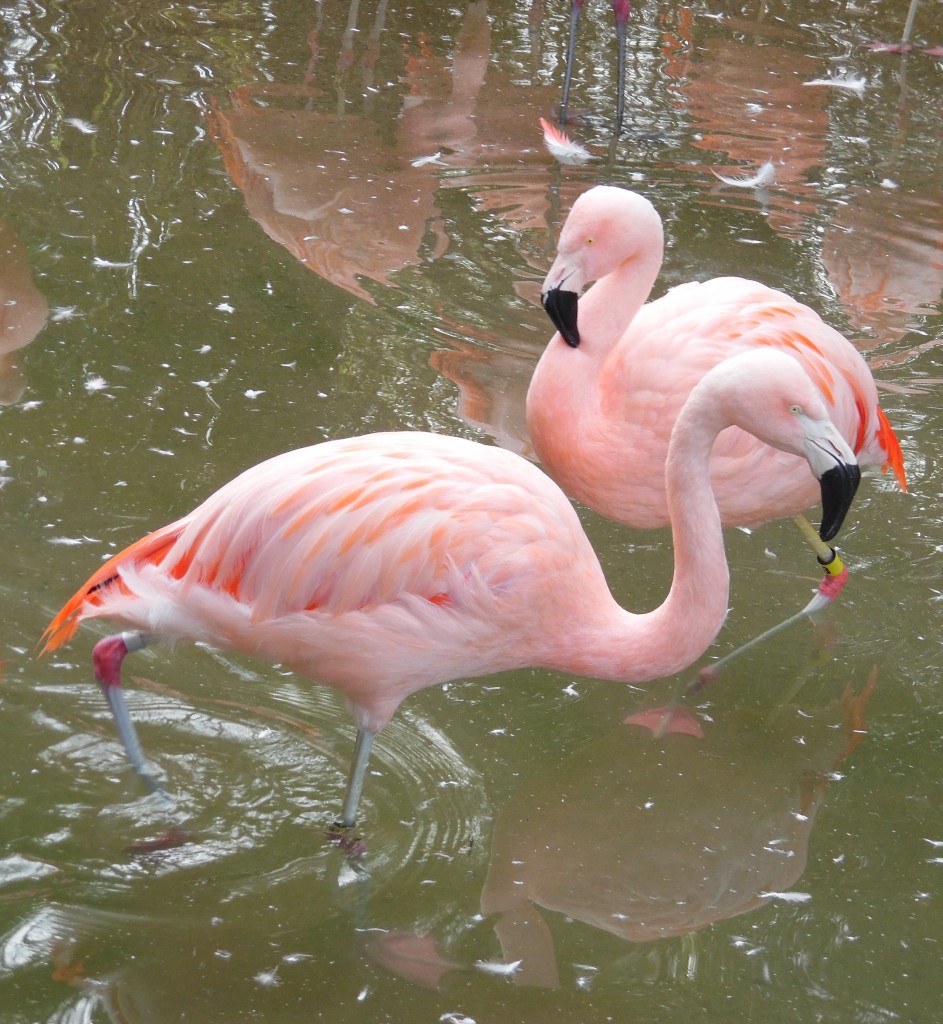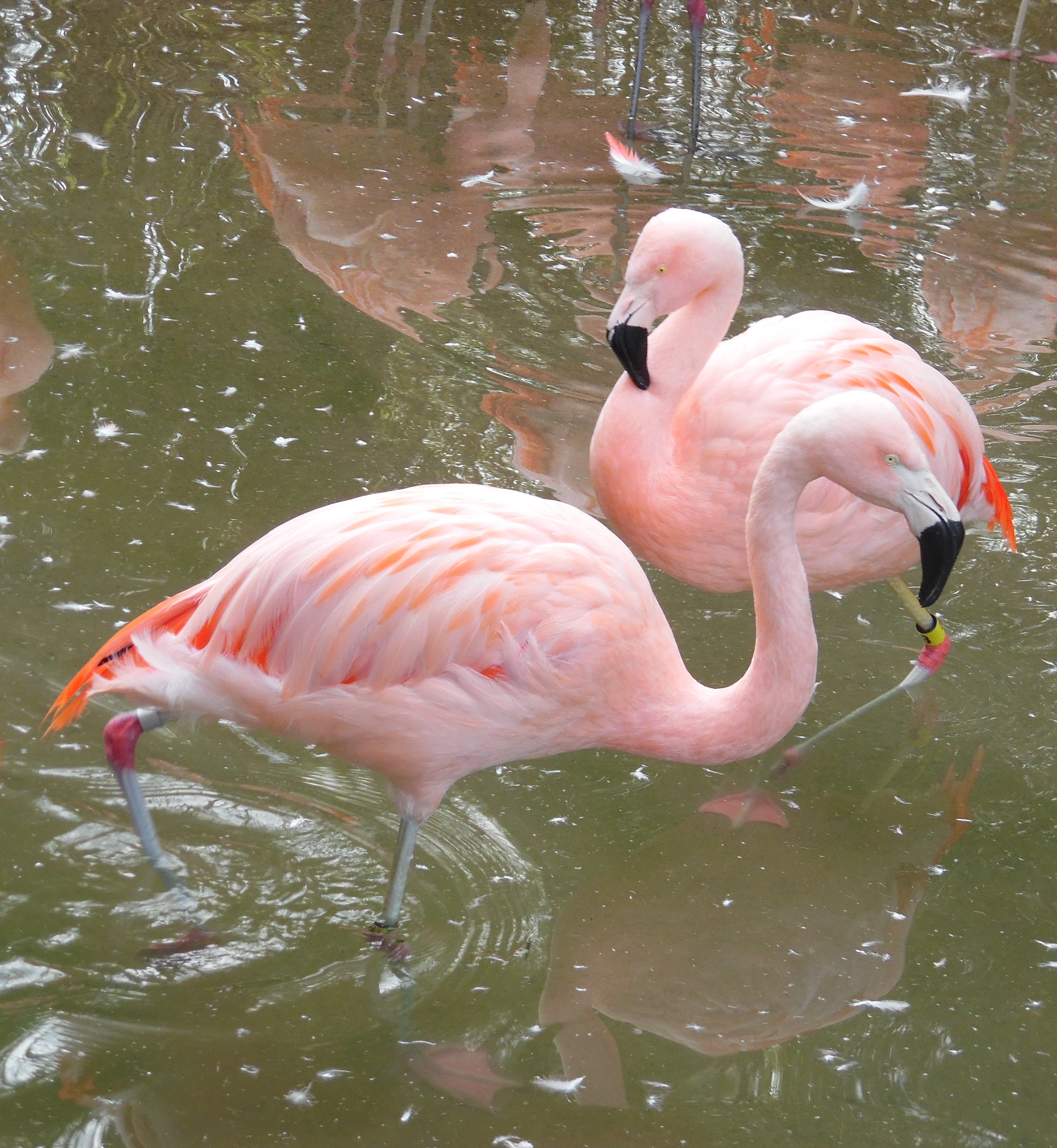

Photo Credit / Briana Magistro
By Briana Magistro
SC Staff Writer
Think of a colorful bird. Is there a tall, pink bird that comes to mind? The pink flamingo is this week’s “Animal of the Issue!”
There are six species of flamingo, which live in South America, Africa, and western India. Each species varies slightly in morphology, but all of them exhibit the infamous pink coloration, and each species lives near water.
Dr. Terry Master, ESU’s ornithologist, commented, “Many species nest in otherwise very inhospitable conditions in extremely salty and hot soda lakes in East Africa and high altitude salty lakes in South America.”
Flamingos choose to make nests near water because of their food source, which consists mostly of blue-green algae and brine shrimp. Flamingos eat so much shrimp and algae that, throughout evolution, the species has developed specialized beaks just for eating!
“Their beak structure is unusual and mimics that of a Baleen whale in function,” Dr. Master said. They have tiny comb-like “teeth” that they use to filter the tiny shrimp and algae into their mouths, keeping out any muck from the water in which they feed.
The feathers of flamingos are not actually pink. Flamingo feathers are naturally white.
Dr. Master explained, “Their characteristic pink color derives from carotenoid pigments in their food, especially the shrimp, which are processed by their liver enzymes and incorporated into their feathers.”
Carotenoids are also found in many vegetables, like carrots, and they are responsible for the vegetable’s color. Studies have shown that carotenoids can improve or sustain vision by repairing or maintaining cells of the retina, the part of the eye that collects light. This is why carrots are associated with great eyesight.
Brighter birds have been documented living more commonly in the wild, as opposed to in captivity. This is most likely because zoos do not provide as carotenoid-rich food as that found in nature. The brighter the flamingo, the better-fed it is, and the easier time it has finding a mate.
Flamingos have been documented to live longer than 80 years in captivity, but do not typically live as long in the wild. They colonize in huge nesting groups, which can contain over a thousand individuals.
Suitable nesting and feeding sites are rare, and they must share to survive. Living in large groups also protects the flamingos from predators, like crocodiles.
From these groups, breeding couples emerge. Flamingos mate for life, and both parents assist in creating and attending to the nest. Nesting quarrels can arise between pairs, especially in the very large colonies where empty nesting sites may be scarce.
Chicks are fed a special “bird milk” that is made in the parents’ guts. It contains proteins and blood cells that help the chicks grow. Flamingo chicks are born with gray feathers. After about a week, chicks leave the nest and form chick groups, which stay together for protection.
Flamingos are relatively common in zoos.
Dr. Master explained, “They are easy to keep and feed and can become fairly tame with their keepers at zoos.”
It is also believed that they do not fear humans as much as other birds because they are so tall.
Many flamingo species are threatened by water pollution. The types of nesting areas that they prefer are rare, and urbanization has contributed to spoiling these sites.
They also have slow reproductive rates, and some countries in South America eat their eggs.
“One species, the Andean Flamingo, is considered vulnerable by the IUCN (International Union for the Conservation of Nature),” Dr. Master added.
In ancient history, flamingos were viewed as worldly representations of gods. They have even been depicted in many ancient artworks in Egypt and South America.
Today, the flamingo is the national bird of the Bahamas, and they represent a touristy beach culture in the United States.
Next time you visit a zoo, look for these pretty pink birds of paradise! Try to guess how old the juveniles are based on the amount of gray feathers they have left. You can also pick out the biggest eaters in the bunch by how pink or red they are!
Although the water in our area does not directly affect flamingos, it does affect many other native species. Our water contributes to rivers that run all the way down to the Chesapeake Bay, affecting all the environments on the way.
Set an example for the rest of the world by preventing water pollution in any way possible, so that flamingo nesting sites can be saved!
Email Briana at:
bmagistro@live.esu.edu

